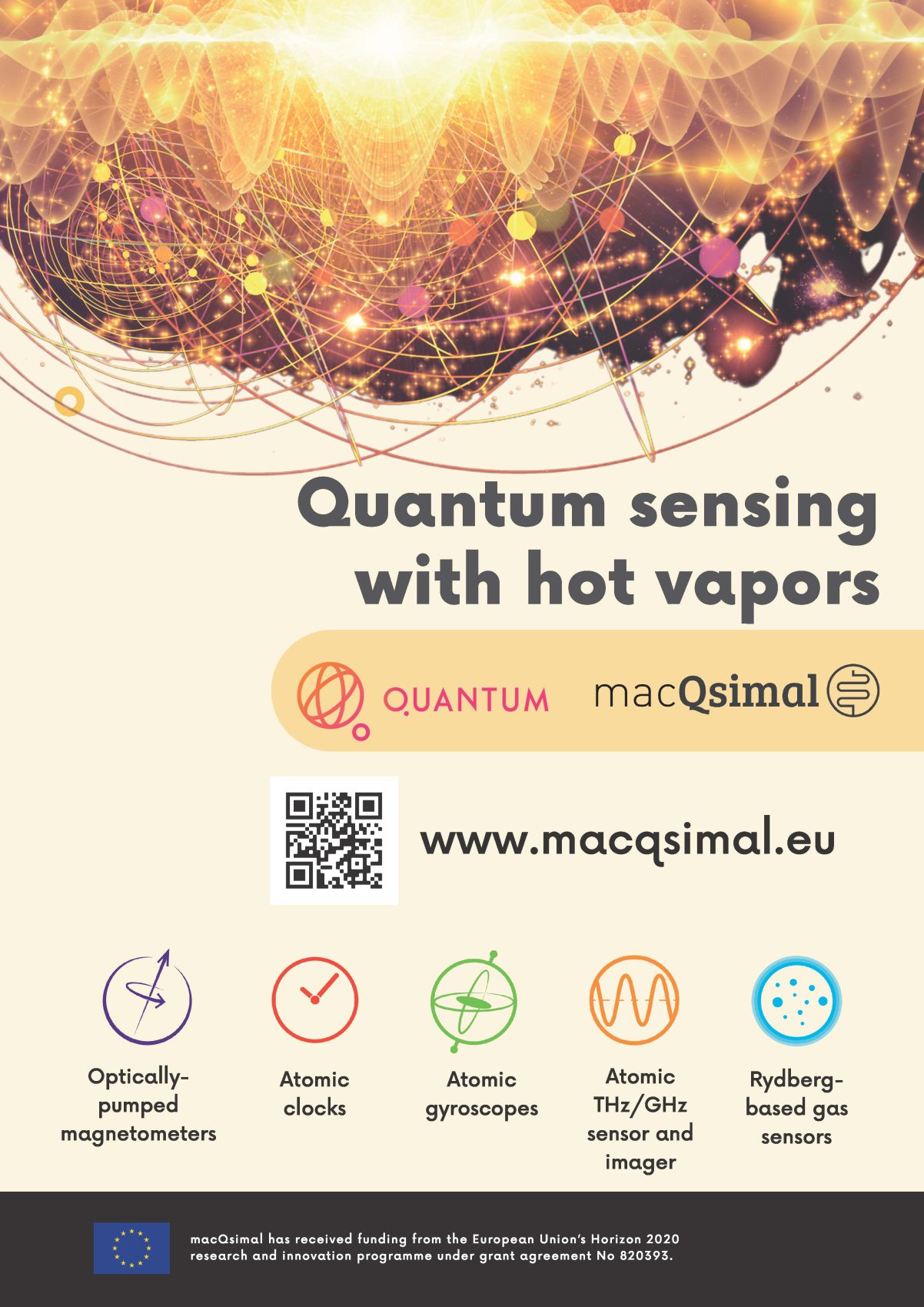ICFO at the Maker faire barcelona 2022
July 1-2, 2022
UPF POBLENOU CAMPUS, BARCELONA
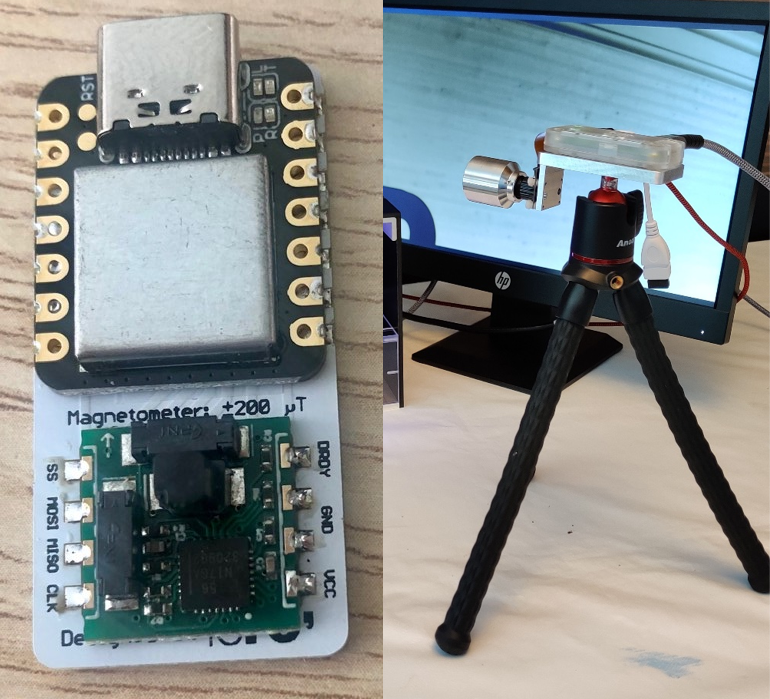
At our stand you will find ICFO scientists presenting some of the research projects that involve maker tools. They’ll be there with some interactive DIY devices that will help attendees understand the ideas behind their research project and how maker tools help cutting-edge research advance.
Click on the following links to find more information.
Health applications
In the Medical Optics group at ICFO, we use many maker-tools to build non-invasive medical devices that could help physicians improve their diagnosis.
Maker tools
- Maker-friendly micro-controllers, such as Arduinos and Teensys, are used both for quick tests but also for devices that are used in clinical studies at the hospitals. We control devices, acquire data, send synchronization signals and more. We have developed several iterations of “ecosystems” around these tools which carry out increasingly complex tasks for us and allow researchers to adapt them to their needs.
- Raspberry Pi‘s are used as low-cost, small foot-print computers when controlling devices. We use them for ultra-portable systems and for systems with many modules. For example, we are in the process of building a wearable neuroimager with 25 cameras each controlled by a Raspberry Pi. A medical device we are developing to be used at intensive care units, for example for caring for COVID-19 patients, is going to have a Raspberry Pi computing module even in its commercial version.
- 3D printing, laser cutting, basic CAD software have proven themselves to be of great use to solve quick problems while prototyping.
- Maker-friendly sensors such as capacitive touch, load accelerometers, distance sensors, photodiodes, environmental sensors and other maker-boards are very useful for us, too. For example, when we do neuro-monitoring of patients suffering from fatal conditions, we monitor light levels in the room, their movements, the accurate placement of probes and use them for quality control and safety.
These tools are also very useful to describe our work to the general public. For example, we have developed some tools for classrooms based on LEGO robotics.
DEMO DEVICE: vein viewer
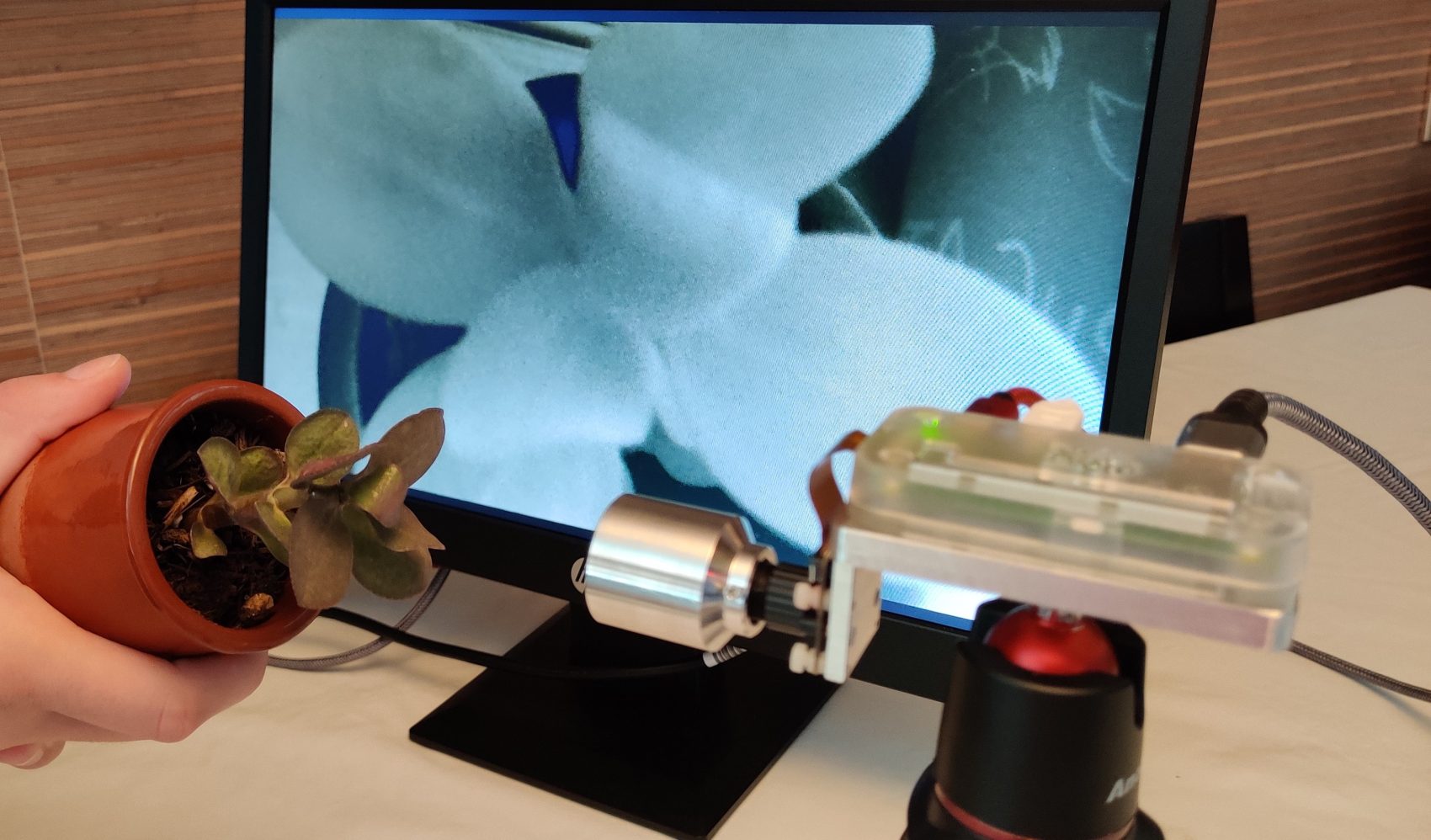
DIY vein viewer designed by ICREA Prof. Turgut Durduran, leader of the Medical Optics group at ICFO.
This device consists of a Rasperry Pi Zero, a NoIR camera – which means that the infrared light blocking filter is removed -, and a filter which blocks the visible light. Either by using the infrared light in the room lights or the sunlight or by using the infrared LED, we can view the veins on arms and hands of visitors. We can also see how different regions of the eye absorbs infrared light and figure out whether plants are alive or not.
our research
Our technologies rely on the propagation of light in human tissues and how it interacts with the tissue. In particular, near-infrared light (~650-900 nm) is able to penetrate deep (centimeters) into the tissues, scatter around and come back out.
During this process, some of it is absorbed (mostly by hemoglobin in blood) and scattered by moving red blood cells. We use physical models and this concept to measure the amount of oxygen and blood flow in the capillaries which can then be related to tissue and organ well being.
This demo device exemplifies this process by showing veins as dark “pipes” since they contain a lot of blood and, therefore, absorb a lot of near-infrared light. We can see sub-surface veins with this method since the light is able to penetrate into this veins.
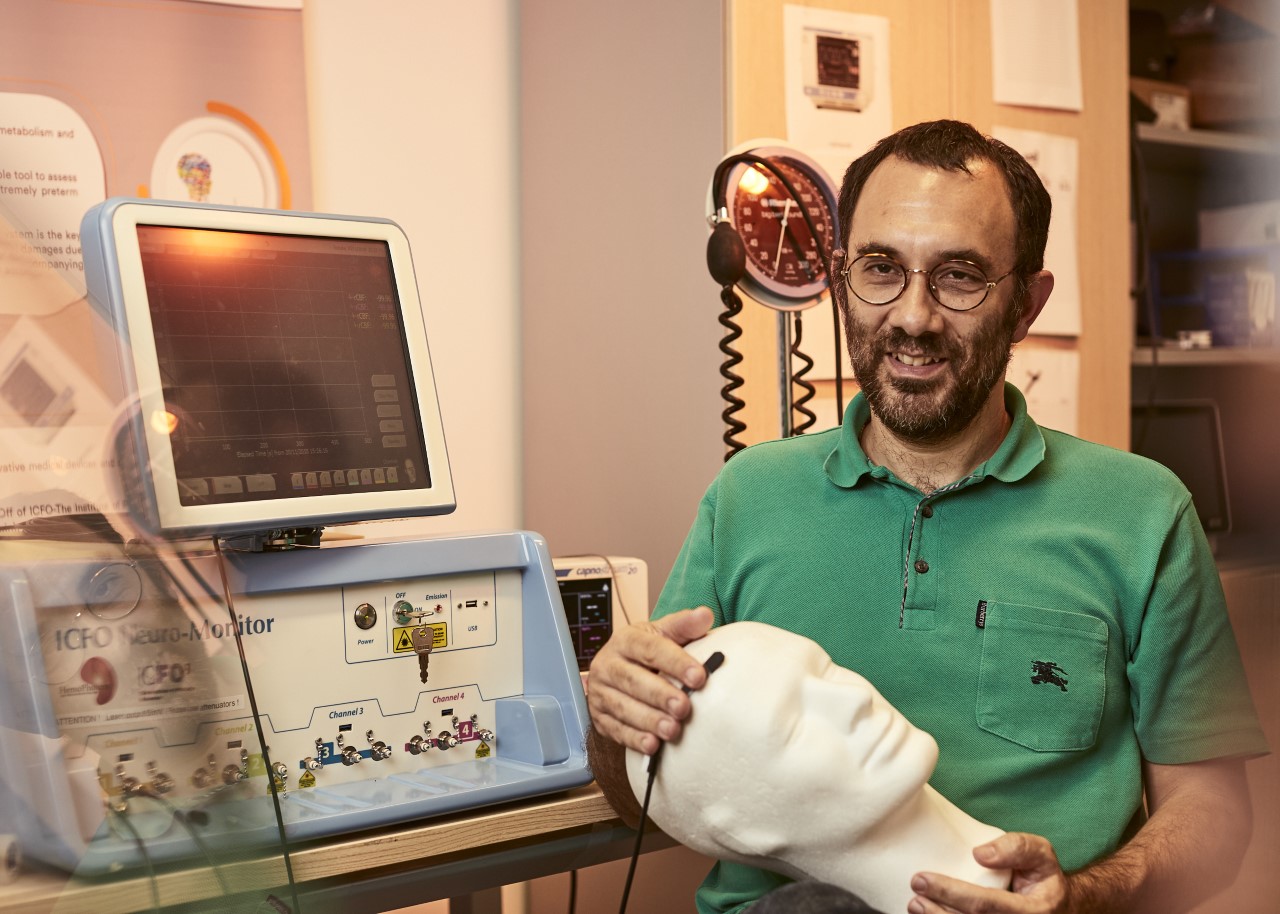
more info
You can find the basic concepts at the base of these projects in the Clara Presents video series.
quantum technologies
In the Atomic Quantum Optics group at ICFO, we use many maker-tools to build devices able to measure incredibly small magnetic fields thanks to quantum physics.
Maker tools
- A thumbnail-sized micro-controller board produced by Seeed studio. It can be programmed via the Arduino environment and contains enough input and output for this simple project.
- RM3100 gaussmeter from PNI. It is the highest performance geomagnetic sensor in its class, with more than 30 times lower noise and 20 times more sensitivity than other magnetic sensors based on other technologies. Measurements are stable over temperature and inherently free from offset drift.
- Piggy-back circuit board designed by us, and manufactured by OSHpark. You can find more info about the circuit board here.
- USB cable, to connect the device to a regular PC or Raspberry Pi.
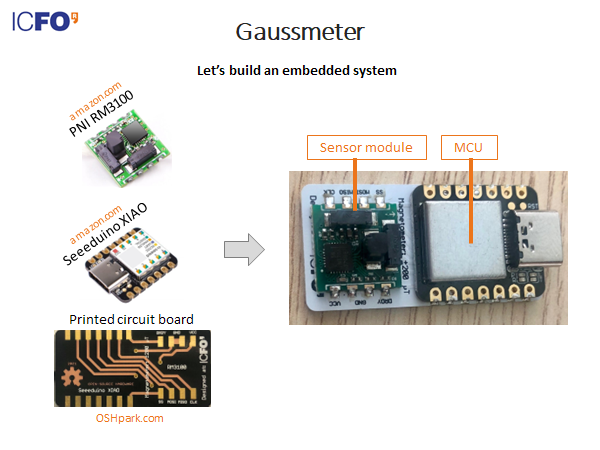
demo device: magnetometer
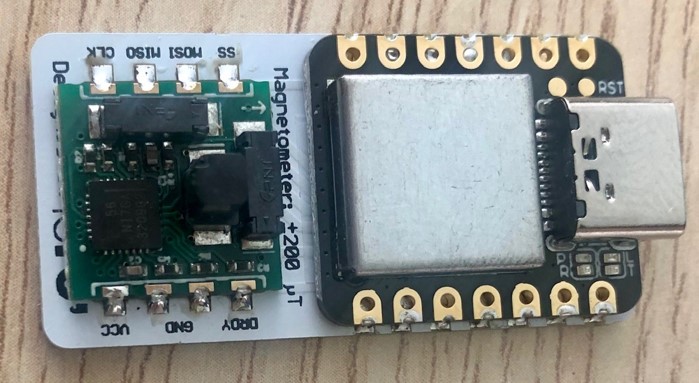
Magnetometer device designed by Dr. Michael Tayler, post-doctoral researcher in the Atomic Quantum Optics group at ICFO.
The device measures X, Y and Z magnetic field components (relative to the orientation of the device) and sends these data to a computer so that they can be visualised on screen, updated around 20 times per second. The measurement has a precision of a few nanotesla, which is about 1000 times lower than the earth’s typical magnetic field (20-50 microtesla).
our research
We use commercially-available sensors like this to calibrate coils, magnetic shielding and other magnetic-field-related equipment in our lab. We also use it to teach students about microcontroller programming, soldering, modular electronics and similar experimental physics lab skills.
In the lab, we also work on developing magnetic field sensors that are much more precise. One example of these is a device called an alkali magnetometer. We use alkali metals (such as rubidium) in the gas phase, together with optical detection techniques, to measure magnetic fields on the order of femtotesla. These fields are therefore about 1 million times smaller than the noise limit of the sensor exhibited here. Alkali magnetometers can be applied to measure electromagnetic activity of the brain or heart, to diagnose abnormalities (e.g. epilepsy, fetal arrhythmia). They can also be used for research purposes, for example the mapping of magnetic fields produced by neural currents can help us further understand how cognition works.

more info
You can find the code we used for the DIY magnetometer on GitHub.
Click on the image to make it larger.




